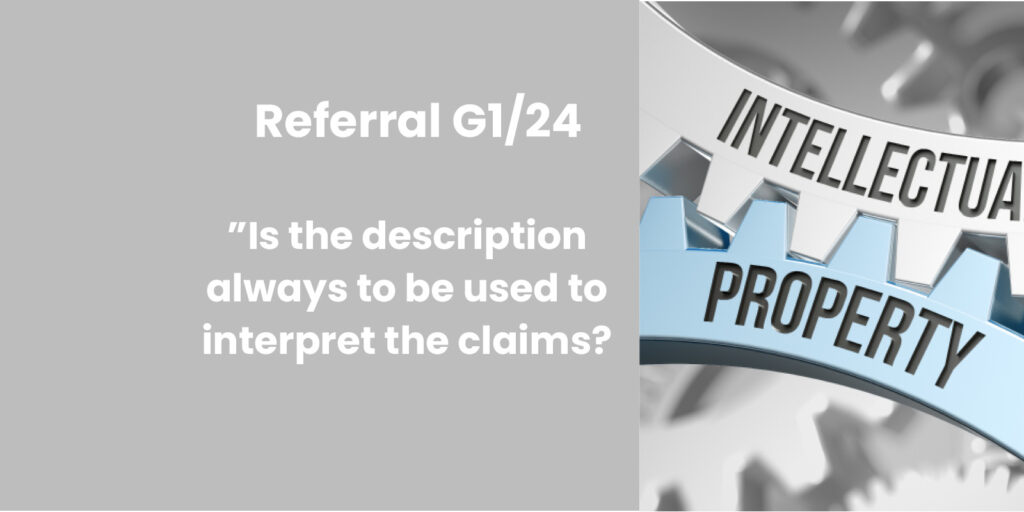Referral G1/24 – Is the description always to be used to interpret the claims?

- Kaisa Suominen
- –
- News
- –
- 2.7.2024

The European Patent Office has traditionally been of the opinion that Article 69(1) EPC and the Protocol on the Interpretation of Article 69 EPC, according to which the extent of the protection conferred by an EP application or an EP patent is determined by the claims, but the description and drawings shall be used to interpret the claims, concerns courts of law, not the EPO itself, with the exception of broadening the scope of protection during opposition (Article 123(3)).
In the past years this opinion has however partly changed, and the opinions as well as the decisions of the Boards of Appeal have diverged at the EPO. Thus, a referral G1/24 has been made to the Enlarged Board of Appeal of the EPO, the referral being based on the decision T439/22 of a technical Board of Appeal. The referral asks the following three questions.
- Is Article 69(1), second sentence EPC and Article 1 of the Protocol on the Interpretation of Article 69 EPC to be applied on the interpretation of patent claims when assessing the patentability of an invention under Articles 52 to 57 EPC?
- May the description and figures be consulted when interpreting the claims to assess patentability and, if so, may this be done generally or only if the person skilled in the art finds a claim to be unclear or ambiguous when read in isolation?
- May a definition or similar information on a term used in the claims which is explicitly given in the description be disregarded when interpreting the claims to assess patentability and, if so, under what conditions?
The Court of Appeal of the UPC gave, in March 2024, a decision UPC_CoA_335/2023, according to which the description and drawings are always to be used to interpret the claims, instead of being used only for resolving unclarities. It will therefore be very interesting to see how the EBoA of the EPO answers the questions asked, which relate to the same issue. The EPO has on one hand said that they will follow decisions of the UPC and aim at harmonising decisions, but on the other hand, the Boards of Appeal of the EPO are independent and their decisions should be based only on the EPC and its Travaux Préparatoires. If the answers to the questions asked will be positive, i.e. that the description and claims are always to be used to interpret the claims, it will be fascinating to read, on which EPC Article or document of the Travaux Préparatoires the decision is based. It might simply be based on the use of the word “shall” in the second sentence of Article 69(1), but we’ll see.
The EPO has also already informed that despite this referral, examination and opposition proceedings will continue as normal, and will thus not be stayed until the decision is issued.

